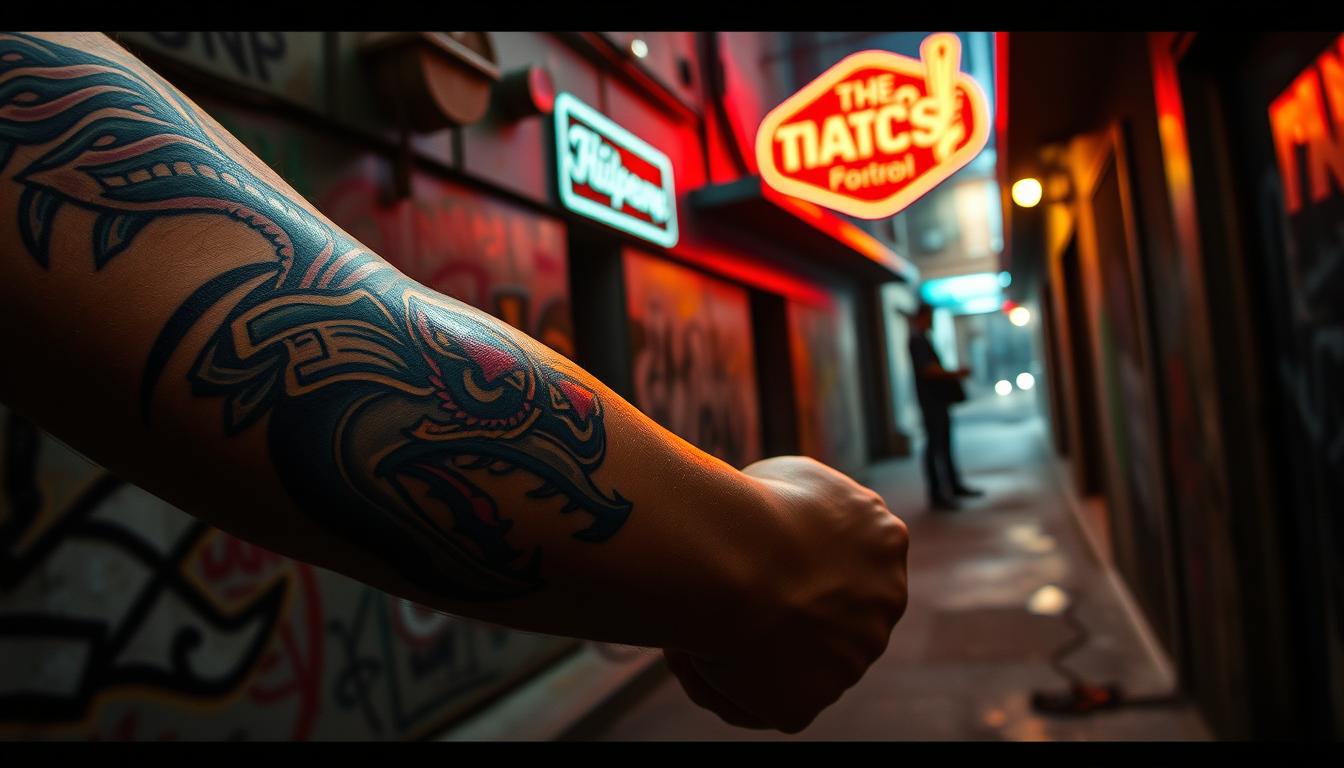
Gangster Chicano tattoos represent a rich and distinctive artistic tradition with deep cultural roots. Emerging from prison culture and street art, this style has evolved into a globally recognized form of expression.
The Chicano tattoo style is characterized by its unique aesthetic qualities and symbolic meanings. This comprehensive guide will explore the historical origins, techniques, and popular styles behind this influential tattoo art.
From its roots in cultural heritage to modern interpretations, we’ll examine the iconic imagery and placement options that make this style enduring. Discover how master artists have shaped this tradition and gain practical advice for considering your first Chicano tattoo.
Key Takeaways
- Understanding the cultural significance of Chicano tattoos
- Exploring the historical origins and evolution of the style
- Learning about the unique techniques and popular styles
- Discovering iconic imagery and placement options
- Gaining insights from master artists in the field
The Cultural Roots of Gangster Chicano Tattoos
Gangster Chicano tattoos have a rich history deeply rooted in the cultural heritage of Mexican-American communities. The development of this unique tattoo style is closely tied to the socio-political struggles and cultural identity of these communities.
From Pachuco Culture to Modern Expression
The Pachuco culture of the 1940s played a significant role in shaping Chicano tattoo art. This subculture emerged as Mexican-Americans created their own identity in the face of discrimination. The influence of historical figures and events, such as the Mexican Revolution and the radical leaders Francisco Madero and Emiliano Zapata, can be seen in the themes and motifs of Chicano tattoos. Chicano tattooing evolved as a form of cultural preservation and identity assertion.
Prison Origins and Street Art Influence
Prison environments significantly influenced the development of Chicano tattooing. Inmates created makeshift tattoo machines using limited materials and developed distinctive black and gray techniques. The influence of street art and muralism also contributed to the visual language of Chicano tattoos, blending fine art traditions with grassroots expression.
| Cultural Influence | Description | Impact on Chicano Tattoos |
|---|---|---|
| Pachuco Culture | Emergence of Mexican-American identity | Shaped themes and motifs |
| Prison Culture | Development of makeshift tattoo machines | Influenced techniques and designs |
| Street Art and Muralism | Blending of fine art and grassroots expression | Contributed to visual language |
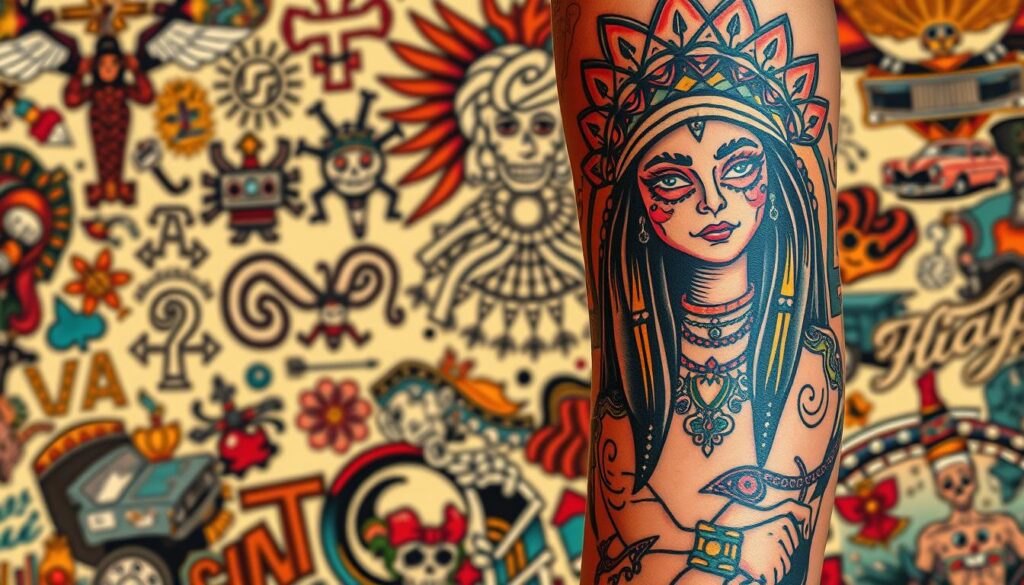
Understanding the Chicano Tattoo Aesthetic
With its roots in prison and street art, the Chicano tattoo style has evolved into a distinct aesthetic that is both visually striking and deeply meaningful. The Chicano tattoo is characterized by its use of black and grey shading, fine lines, and intricate details.
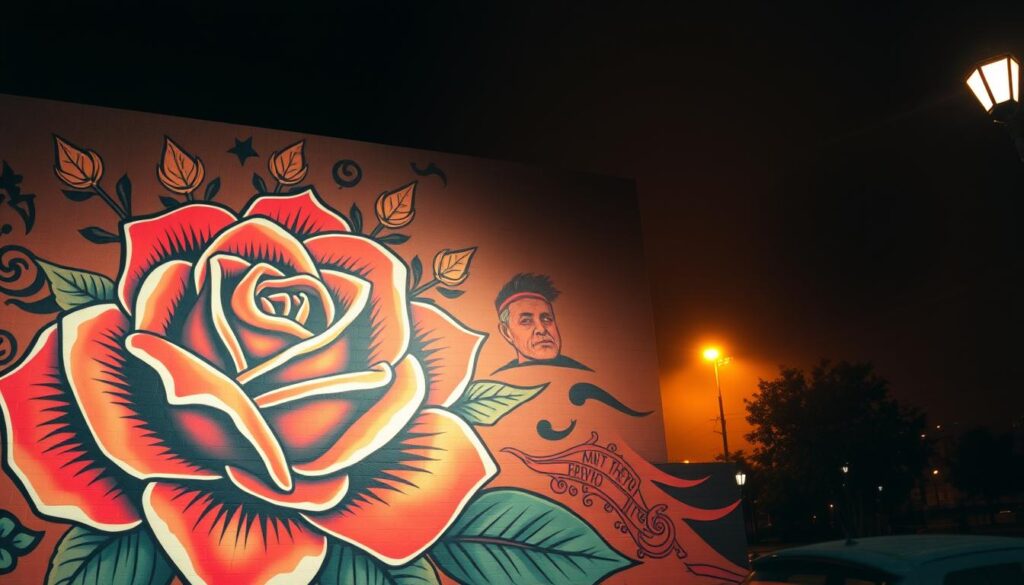
Black and Grey Technique
The black and grey technique is a hallmark of the Chicano tattoo style. This method involves creating detailed designs using various shades of grey, achieved through meticulous shading techniques that give the tattoos depth and dimension.
Fine Line Work and Shading
Fine line work is another critical element of tattooing in the Chicano style. Artists use exceptionally fine lines to create realistic and detailed designs, often drawing inspiration from pencil and pen drawings, particularly the traditional paños (handkerchief art) created by inmates.
The combination of fine line work and shading techniques results in a unique aesthetic that balances realism with stylization, making the Chicano tattoo style highly influential in the world of tattoo art.
Popular Gangster Chicano Tattoo Styles
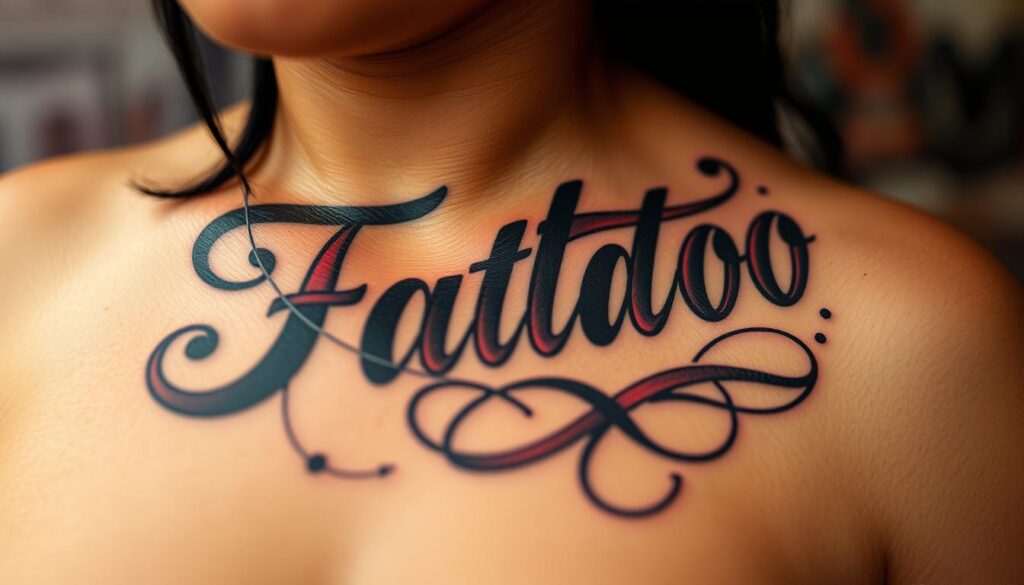
The Chicano tattoo style is characterized by its bold and expressive designs, often featuring script, portraits, and religious imagery. This style has become iconic within the tattoo community, reflecting the cultural heritage and personal expression of the Chicano people.
Script and Lettering
Script and lettering are foundational elements in gangster Chicano tattoos, featuring elaborate stylized fonts that convey personal messages or family names. The distinctive lettering style is known for its flowing, ornate characteristics.
Realistic Portraits
Realistic portraits in the Chicano style demonstrate exceptional technical skill, capturing loved ones or cultural icons with remarkable detail using black and gray tones. These portraits are a hallmark of Chicano tattoos, showcasing the artist’s precision.
Religious Imagery
Religious imagery, particularly Catholic iconography, plays a central role in Chicano tattoo tradition, reflecting the cultural and spiritual heritage of the community. This imagery is often used to convey deep personal significance and faith.
Iconic Symbols in Chicano Tattooing
Iconic symbols in Chicano tattoos serve as visual narratives, weaving together threads of culture, street life, and spirituality. These symbols are not just decorative; they carry deep meanings that reflect the wearer’s identity, experiences, and values.
Lowriders and Street Culture
Lowriders represent a central symbol in Chicano tattooing, celebrating car culture and customization as expressions of cultural pride and artistic excellence. The imagery often includes intricate details of customized cars that hold significant meaning within street culture and community identity.
Payasas and Clown Imagery
Payasas, or clowns, symbolize the duality of life experience, often accompanied by the phrase “Smile Now, Cry Later” to represent life’s emotional extremes. This imagery is a powerful representation of the balance between hardship and happiness.
Catholic Iconography
Catholic iconography, including the Virgin Mary, sacred hearts, crosses, and praying hands, reflects the deep religious influences in Chicano culture. These symbols are borrowed from Roman Catholic traditions and are integral to the visual storytelling in Chicano tattoos.
| Symbol | Meaning |
|---|---|
| Lowriders | Celebration of car culture and customization |
| Payasas/Clowns | Duality of life experience |
| Catholic Icons (e.g., Virgin Mary) | Deep religious influences and spiritual expression |
![]()
The Meaning Behind Gangster Chicano Tattoos
Gangster Chicano tattoos are more than just visually striking; they carry deep meanings rooted in the culture and history of the Chicano community. These tattoos serve as a visual narrative of the wearer’s life experiences, values, and affiliations.
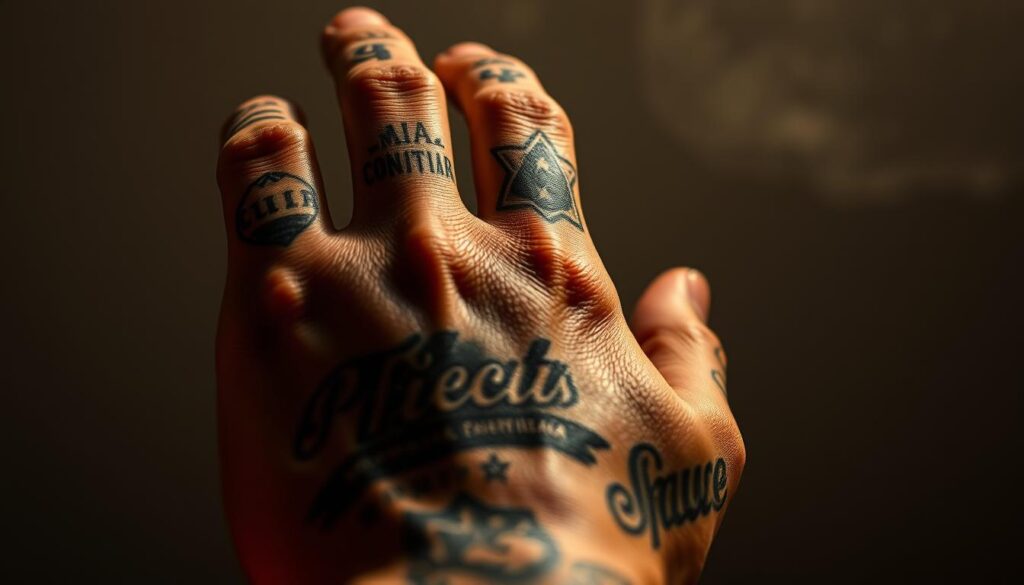
Family and Loyalty Representations
Family representations in Chicano tattoos often honor loved ones through portraits and symbolic imagery, emphasizing unbreakable bonds. Loyalty to family and cultural heritage is a central theme, reflecting community solidarity.
Life and Death Symbolism
Life and life experiences are symbolized through imagery like sugar skulls and religious iconography, acknowledging the temporary nature of life and honoring departed loved ones. These symbols transform the body into a canvas that tells the wearer’s personal story.
The use of tears tattooed near the eye, symbolizing loss or incarceration, further emphasizes the personal and emotional significance of these tattoos. Overall, Gangster Chicano tattoos are rich in culture and personal significance, making each design unique and meaningful.
Influential Chicano Tattoo Artists
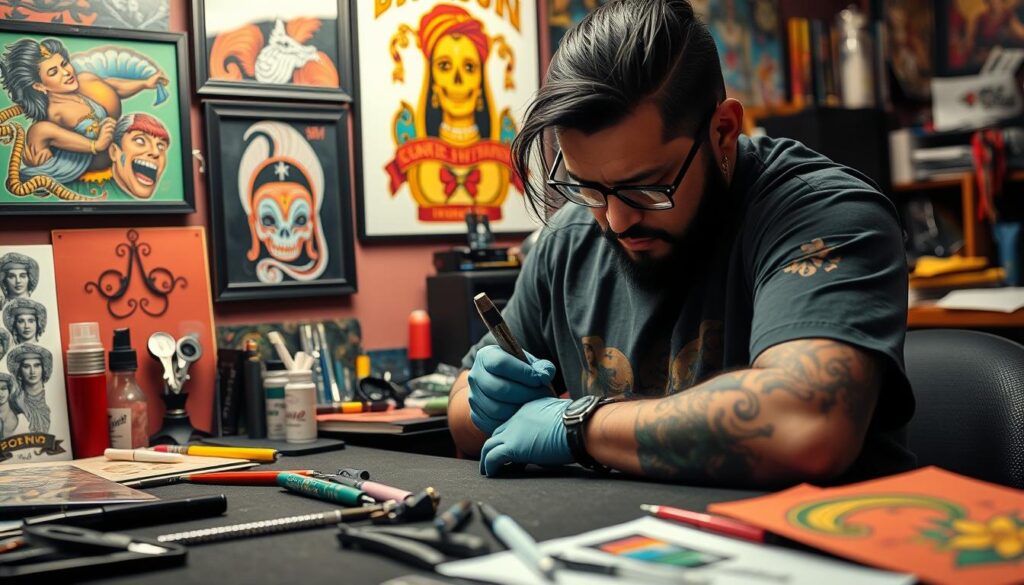
Renowned Chicano tattoo artists have brought the style to the forefront of the tattoo community. Artists like Freddy Negrete and Mister Cartoon have been instrumental in shaping the aesthetic of Chicano tattoos.
Pioneers of the Style
Pioneering artists such as Freddy Negrete and Jack Rudy revolutionized Chicano tattooing by refining black and gray techniques and bringing prison-style art into professional studios. These innovators faced challenges in gaining recognition while staying true to their cultural roots.
Contemporary Masters
Contemporary masters like Mister Cartoon, Chuey Quintanar, and Tamara Santibañez have elevated Chicano tattooing to fine art status while maintaining its cultural authenticity. Many of these artists learned their craft through informal apprenticeships or while incarcerated, developing techniques that became industry standards.
The work of these influential artists serves as a testament to the rich cultural heritage of the Chicano community, preserving and evolving artistic traditions while gaining international recognition for their distinctive style.
Placement Ideas for Chicano Tattoos
The strategic placement of Chicano tattoos can elevate their cultural significance. The placement is not just about aesthetics; it’s also about the meaning and visibility of the tattoo.
Traditional Placements
Full sleeves and back pieces are traditional canvases for Chicano tattoos, allowing for narrative storytelling. These placements enable the tattoo artist to create cohesive and elaborate designs that flow around the arm or cover the back.
- Full sleeves represent a traditional canvas, allowing for connected imagery that flows around the arm.
- Back pieces provide expansive space for elaborate scenes incorporating multiple elements of Chicano iconography.
Accent Designs
Smaller designs and accents work well on forearms, hands, and neck areas, serving as visible statements of cultural identity. The chicano tattoo style is characterized by fine line work and shading techniques that are showcased in these placements.
- The chest area is often reserved for significant religious imagery or family tributes.
- Smaller designs on forearms, hands, and neck areas make visible statements of cultural identity.
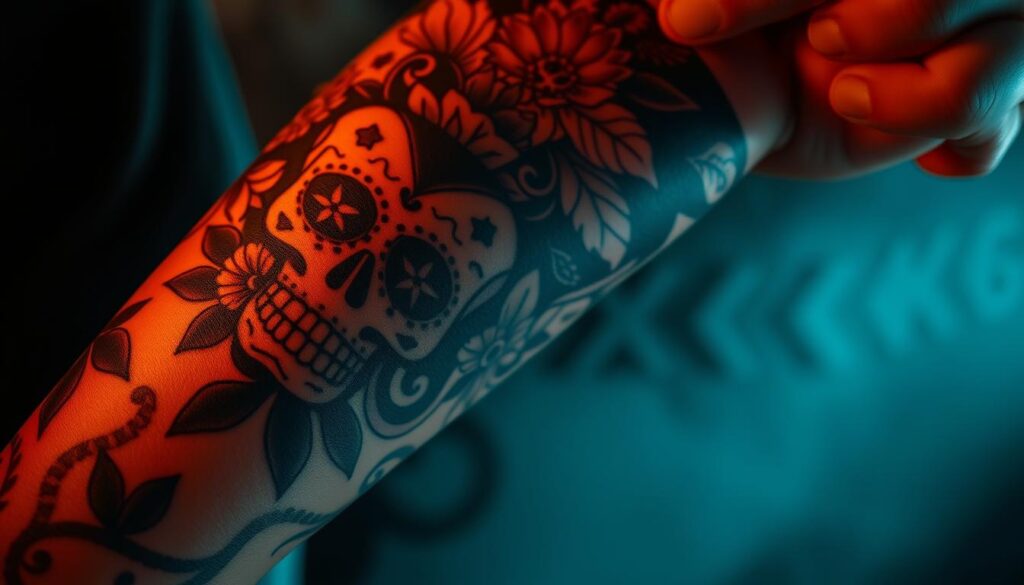
Getting Your First Chicano Style Tattoo
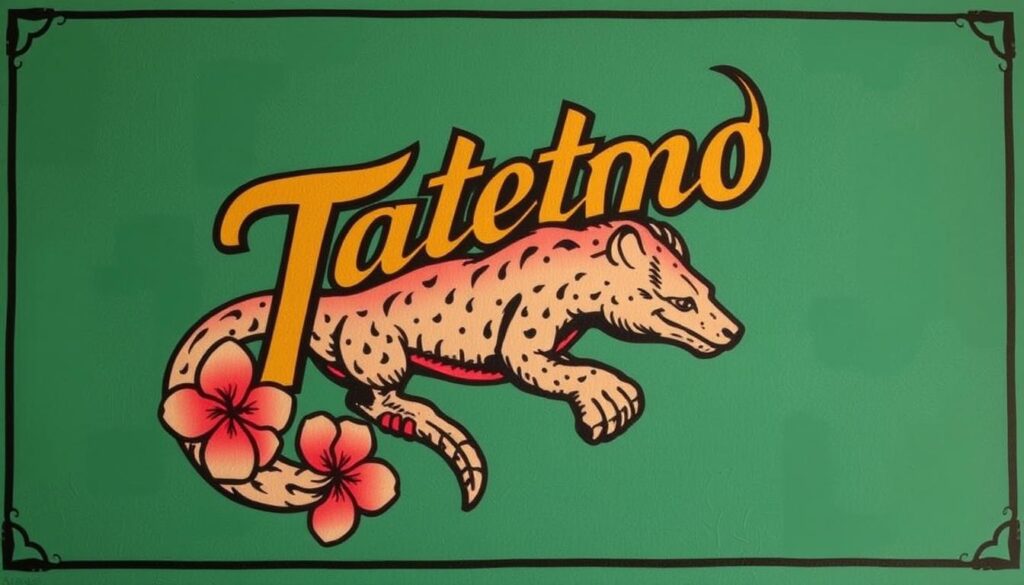
Embarking on getting your first Chicano style tattoo is an exciting journey that requires careful consideration. This unique tattoo style is deeply rooted in cultural heritage, making it essential to approach the process with respect and understanding.
Finding the Right Artist
To get a Chicano tattoo that truly represents your connection to the culture, you need to find an artist with the right experience. Researching portfolios for black and gray work and fine line techniques is crucial.
- Look for artists who demonstrate not only technical skill but also cultural understanding and connection to the Chicano tattoo tradition.
- Consultation is crucial for discussing your concept, as a knowledgeable artist can help ensure your design respects the cultural significance of chosen symbols.
Preparation and Aftercare
Preparation involves considering placement carefully, as different body areas showcase the distinctive shading techniques of tattooing differently. For more information on various tattoo styles and inspiration, you can visit https://nailcutandink.com/beautiful-tattoos/.
- Aftercare is particularly important for preserving the fine details and subtle shading that make Chicano tattoos distinctive.
- Following your artist’s specific instructions diligently is key to a successful healing process.
Modern Interpretations of Gangster Chicano Tattoos
Modern Chicano tattoos reflect a fusion of cultural heritage and contemporary artistry. This blend is evident in the work of contemporary artists who are pushing the boundaries of traditional Chicano tattooing.
Fusion with Other Styles
The Chicano tattoo style has evolved to incorporate elements from other tattoo styles, such as realism and neo-traditional. This fusion has resulted in unique and intricate designs that still honor the traditional Chicano aesthetic. As noted by tattoo artists, “The incorporation of new styles has kept Chicano tattooing relevant and fresh.”
Contemporary Themes and Designs
Contemporary Chicano tattoos address modern social issues while maintaining traditional iconography. The use of digital design tools has enabled artists to create complex and detailed designs that reflect the changing experiences of the Chicano community. 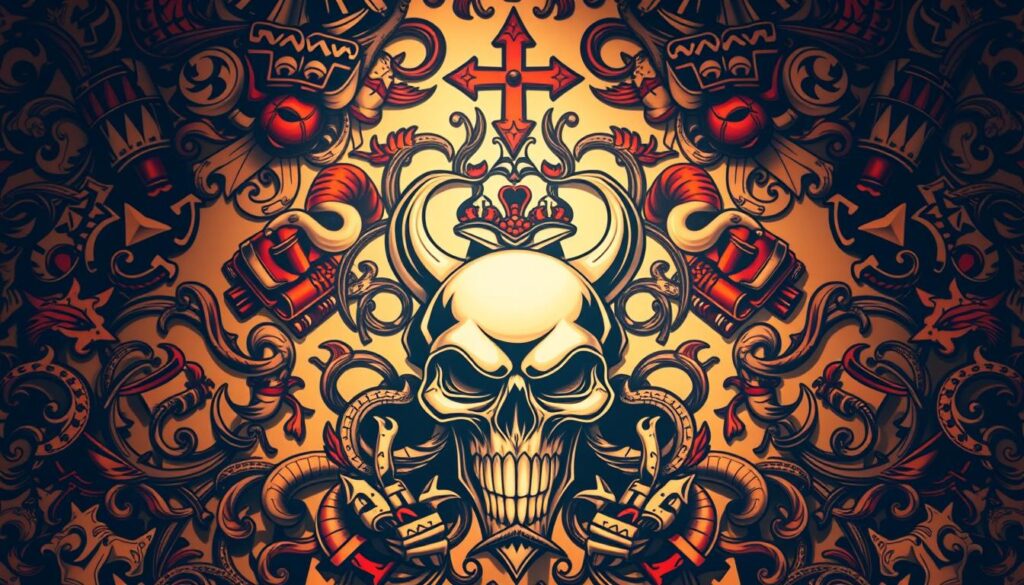 The result is a vibrant and evolving art form that continues to be a meaningful form of expression for people.
The result is a vibrant and evolving art form that continues to be a meaningful form of expression for people.
Conclusion
Chicano tattooing is a powerful expression of cultural identity and personal experience. Gangster Chicano tattoos represent a rich cultural heritage that has survived and thrived despite historical marginalization. The distinctive aesthetic of black and gray fine line work continues to influence the broader tattoo world. These tattoos serve as visual storytelling devices, preserving personal and community histories through symbols often used to represent family, faith, and life experiences. They remain a profound art form that bridges generations.
